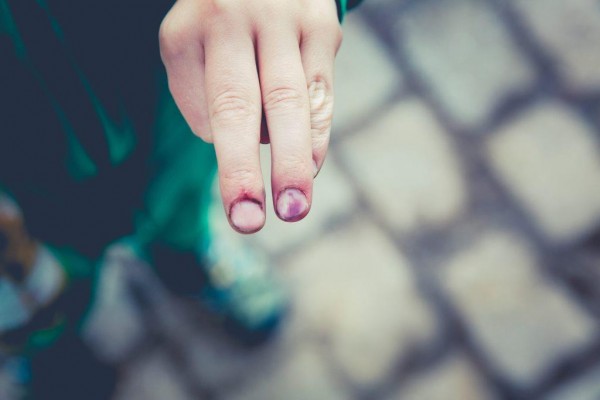Is Your Skin Turning Blue? Here’s What You Need to Know

One is likely to have methemoglobinemia if there is no sufficient oxygen; usually, red blood can become blue, and the nails follow suit.
Do you notice some changes in your skin? You're probably experiencing a condition also known as "methemoglobinemia."
According to Healthline, "methemoglobinemia" is a blood ailment where there is very little oxygen delivered to the human cells.
Oxygen is carried through the bloodstream through hemoglobin, a protein attached to the red blood cells.
Typically, hemoglobin emits the oxygen to the cells all over the body. Nevertheless, there is a particular kind of hemoglobin, also called "methemoglobin" that takes the oxygen all the body but does not emit it to the cells.
According to the study, once a body yields too much methemoglobin, it can start replacing the normal hemoglobin. It then can result in having inadequate or insufficient oxygen that gets to the cells.
ALSO READ: Purple Urine Bag Syndrome: What You Need to Know About This Rare Illness
Symptoms of 'Methemoglobin'
In September last year, a woman from Rhode was reported to have gone to the emergency room seeing her skin and blood becoming strange in appearance, specifically in the shade.
Aside from the color, the 25-year-old patient said she was feeling week and physically turning blue. Miriam Hospital, Otis Warren, who attended to and treated the said patient, stated, the latter reported she applied significant amounts of "topical benzocaine, a numbing drug," because she had a toothache at that time.
Based on the report from Warren and her colleagues, the medication the patient used could have an unusual and possibly hazardous side effect.
Specifically, they said, "Benzocaine can lead to iron in the blood to give up electrons, change form" and stop properly binding to oxygen.
According to studies, the body depends on strong bonds between the oxygen and iron to have the life-sustaining component moved through it.
If there is no sufficient oxygen, usually, red blood can become blue, and the nails follow suit. Methemoglobinemia fundamentally smothers the tissues of the body.
And, as the disorder does so, it can also result in severe impairment if levels of blood oxygen drop lower than 70 percent.
In this case, the blood coming from the arteries of the patient appeared in dark blue, when it was supposed to be bright red.
What's even more is that the woman's blood oxygen had dropped to 67 percent when it should ideally have been soaring almost 100 percent.
The doctors immediately administered a medication, also known as methylene blue, a treatment restoring iron to its correct form within the body's blood.
Following two doses of the drug and a night spent at the hospital, the normal color of the patient went back to normal, the oxygen levels of her blood rose, and she was released from confinement fully recovered.
DON'T MISS THIS: Repurposing Antibiotics Can Help Treat Depression, Study Finds
Proper Administration of Benzocaine
Experts recommend that one should read the Benzocaine's label adequately to find out if an "active ingredient" is present before purchasing the product over the counter.
In addition, one is advised not to use products too, with benzocaine on children whose age is below two years old.
Other than using OTC drugs with benzocaine to relax a teething baby, the American Academy of Pediatrics recommends that parents let their kids use "teething ring" chilled in the fridge. Rubbing the baby's gums with a finger is also an effective treatment.
Lastly, adults are advised not to use products with benzocaine for over four times each day, and they should not use the same drugs with benzocaine if they are experiencing heart condition, smoking or suffering from asthma, emphysema or bronchitis.
IN CASE YOU MISSED THIS: Premature Babies at Higher Risk of Experiencing Heart Ailments in Life, New Study Finds
Jul 10, 2020 08:00 PM EDT





